Pesticide Usage in Scotland: Outdoor Vegetable Crops 2023
This publication presents information from a survey of pesticide use on outdoor vegetable crops in Scotland during 2023.
General trends
Crop area
In 2023 the census area of outdoor vegetable crops grown in Scotland was 21,467 hectares. This represents a 3% decrease in cropped area from 2021 [3] and a 15% increase from 2019 [4]. Since the last survey, census areas of most vegetable crops have decreased (Figure 1). Areas of leaf brassicas decreased by 10%, other vegetable crops by 7%, carrots by 6% and turnips and swedes by 2%. The overall areas of peas and beans increased by 1%.
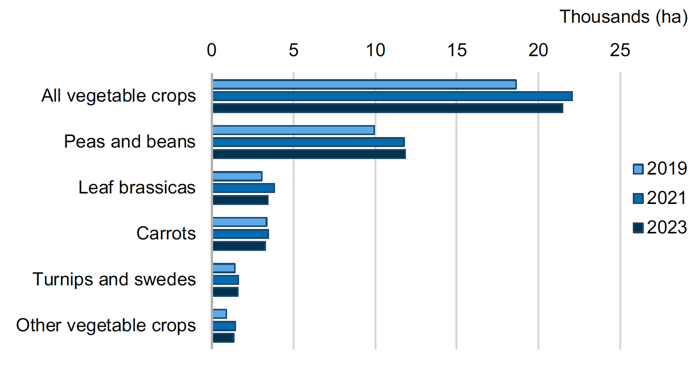
Figure 1 footnote: Source – June Agricultural Census. Areas do not include multi-cropping.
In 2023, peas and beans accounted for 55% of the outdoor vegetable crop area, leaf brassicas 16%, carrots 15%, turnips and swedes 7% and other vegetable crops 6% (Figure 2). For full details of census crop areas, see supporting documentation Table 11.
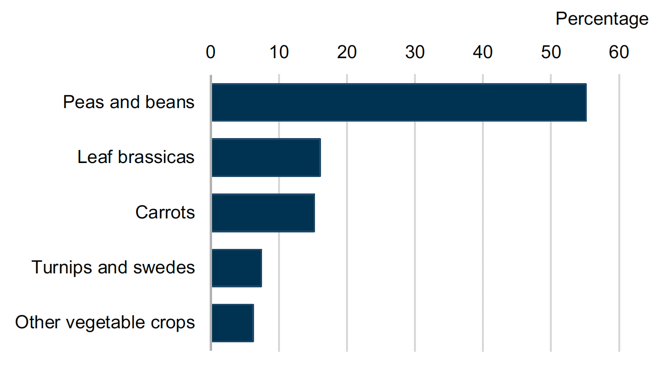
Pesticide usage
In 2023, 90% of vegetable crops received a pesticide treatment, very similar to the 89% treated in 2021 and a decrease from the 96% in 2019. The crops receiving the highest overall treatments proportionally were Brussels sprouts, turnips and swedes and vining peas (100, 99 and 96% respectively, see supporting documentation Table 1). Broad beans, carrots, calabrese, other brassicas and other vegetable crops had the lowest proportion of treated crop (93, 86, 84, 84 and 23% treated respectively) (see Glossary and background notes for the list of crops included in the 'other vegetable' and 'other brassica' crop categories). The treated area of crops received on average 5.1 pesticide applications compared to 5.2 in 2021 and 5.3 in 2019. In 2023, the highest average number of applications were to Brussels sprouts with 14.2 and the lowest number were to vining peas at 2.0 applications.
The estimated area of outdoor vegetables treated with a pesticide formulation was ca. 166,100 hectares in 2023 compared with ca. 149,200 hectares in 2021 and ca. 176,200 hectares in 2019 (Figure 3). This represents an increase of 11% since 2021 and a decrease of 6% since 2019.
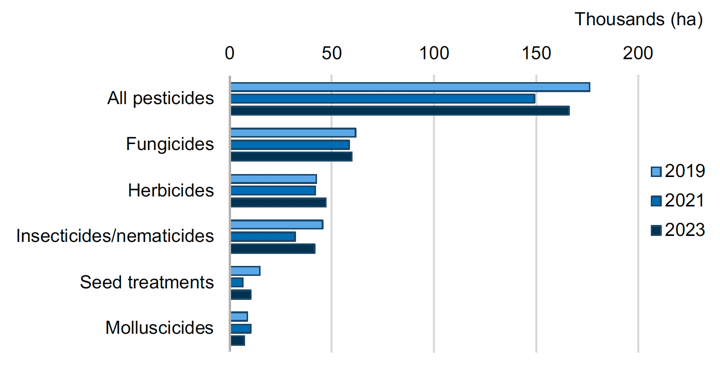
Figure 3 footnote: Sulphur and biological control agents have been excluded as their use represents < 1,000 hectares in 2023. Garlic is included in insecticides/nematicides as it was applied as a nematicide on carrots. Note, garlic was recorded as a physical control agent in previous surveys.
The weight of pesticide applied was ca. 60.6 tonnes in 2023, an increase of 13% from 2021 (ca. 53.6 tonnes) and a decrease of 17% from 2019 (ca. 72.6 tonnes) (Figure 4).

Figure 4 footnote: Sulphur and seed treatments have been excluded as their use represents < 1 tonne in 2023. Invertebrate biological control agents are applied by number of organisms rather than weight therefore weight data are not presented. Garlic is included in insecticides/nematicides as it was applied as a nematicide on carrots. Note, garlic was recorded as a physical control agent in previous surveys.
In order to make accurate comparisons between the 2023 data and those reported in previous surveys, it is important to take into account differences in crop areas between years. Therefore, the number of treated hectares per hectare of crop grown and the total weight of pesticide used per hectare of crop grown were calculated. In 2023, for each hectare of crop grown, 7.8 pesticide treated hectares were recorded (Figure 5). This represents an increase of 15% when compared to 2021 and a decrease of 18% from 2019. The estimated weight of pesticide applied per hectare of crop grown in 2023 was 2.8 kilograms (Figure 6). This represents an increase of 17% from 2021 and a decrease of 27% from 2019. The increase in the overall pesticide use since 2021 may have been influenced by more favourable climatic conditions for pests and pathogens in 2023. In the East of Scotland, where the majority of vegetable crops are grown, it was much milder earlier in the year with winter 2022 and spring 2023, 67% and 17% warmer than in 2021 respectively [5]. Summer and autumn rainfall was 37% higher in 2023 than in 2021. These warmer and wetter conditions may have increased disease and weed pressure on crops in 2023 compared with 2021, therefore, increased pesticide use. In contrast 2023 was drier in the spring and summer (25% and 24% lower rainfall respectively) than in 2019 with similar temperatures, and therefore pest pressure may have been relatively lower in 2023 than 2019. The decrease in pesticide use since 2019 may have also been influenced by the continuing withdrawal of active substances from the market reducing pesticide availability.
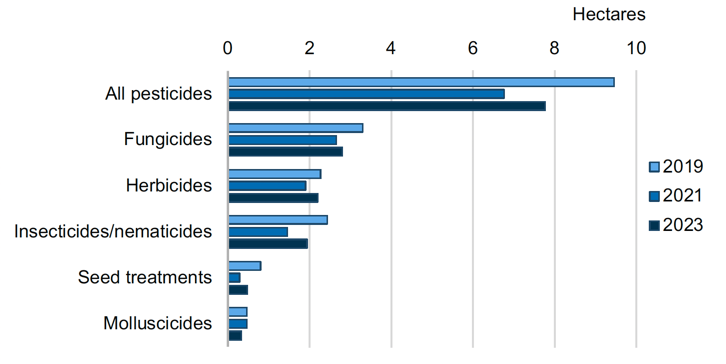
Figure 5 footnote: Sulphur and biological control agents have been excluded as their use represents < 0.1 treated hectares per hectare of crop grown. Garlic is included in insecticides/nematicides as it was applied as a nematicide on carrots. Note, garlic was recorded as a physical control agent in previous surveys.

Figure 6 footnote: Molluscicides, sulphur and seed treatments have been excluded as their use represents < 0.1 kilograms applied per hectare of crop grown. Invertebrate biological control agents are applied by number of organisms rather than weight therefore weight data are not presented. Garlic is included in insecticides/nematicides as it was applied as a nematicide on carrots. Note, garlic was recorded as a physical control agent in previous surveys.
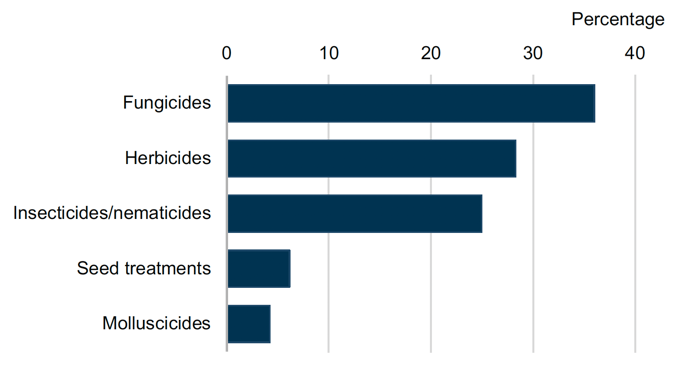
Figure 7 footnote: Sulphur and biological control agents have been excluded as their use represents < 0.5% of area treated. Garlic is included in insecticides/nematicides as it was applied as a nematicide on carrots. Note, garlic was recorded as a physical control agent in previous surveys.

Figure 8 footnote: Seed treatments have been excluded as their use represents < 0.5% of weight applied. Garlic is included in insecticides/nematicides as it was applied as a nematicide on carrots. Note, garlic was recorded as a physical control agent in previous surveys.
Fungicides
In 2023 and 2021, fungicides were the most frequently used pesticide by area treated on outdoor vegetable crops (Figure 7), followed by herbicides and insecticides/nematicides. Fungicides accounted for 36% of the total pesticide treated area and 30% of the total weight of pesticides applied (Figures 7 and 8). When changes in crop area are taken into account, the area treated with fungicides increased by 5% from 2021 to 2023 and decreased by 15% between 2019 and 2023 (Figure 5). From 2021 to 2023, there was a less than 1% increase in the weight of fungicides used per hectare of crop grown, and a decrease of 18% between 2019 and 2023 (Figure 6). Fungicide use in 2021 was lower than in previous surveys influenced by a cold, dry spring and dry summer which helped reduce disease pressure and therefore the need to apply fungicides [3]. Summer in 2023 was characterised by persitent rain (37% higher in 2023 than 2021 in the East of Scotland [5]) and warmer than average spring temperatures which may have increased disease pressure in crops compared to 2021. However, overall fungicide use in 2023 may also have been influenced by crop composition. The area of Brussels sprouts grown in 2023 was 13% lower than in 2021. This crop is often one of the most frequently treated crops with a fungicide. The principal fungicide mode of action on vegetable crops continues to be inhibition of respiration (this group includes Qo inhibitors and SDHIs, see supporting document Table 5).
Herbicides
In 2023, herbicides accounted for 28% of the total pesticide treated area and 51% of the total weight of pesticides applied (Figures 7 and 8). When changes in crop area are taken into account, there was a 16% increase in the area treated with herbicide formulations from 2021 to 2023 and a 3% decrease from 2019 and 2023 (Figure 5). In terms of weight of pesticide applied, when area of crop grown is taken into account, there was a 10% increase from 2021 to 2023 and a 20% decrease from 2019 to 2023 (Figure 6). Weed pressure in 2023 may have been higher than in 2021 due to more favourable climatic conditions for weed growth resulting in increased herbicide use in 2023 (East of Scotland had a warmer spring and wetter summer in 2023 than 2021 [5]). There were large increases in the use of individual actives such as aclonifen and prosulfocarb (81 and 163% respectively, supporting document Table 8) predominately used on carrots. Glyphosate use increased by 118% between 2021 and 2023 particularly for before planting treatments on peas and beans. In contrast, the cold, dry spring in 2021 reduced weed emergence before planting and resulted in less requirement for before planting treatments [3]. Inhibition of microtuble assembly continues to be the principle herbicide mode of action (see supporting document Table 6).
Insecticides/nematicides
Insecticides/nematicides accounted for 25% of the total pesticide treated area and 17% of the total weight of pesticides applied (Figures 7 and 8). When changes in crop area are taken into account, there was a 34% increase in the area treated with insecticide/nematicide formulations from 2021 to 2023 and a 20% decrease from 2019 to 2023 in (Figure 5). In terms of weight applied per hectare of crop grown, there was a 177% increase from 2021 to 2023 and a 82% increase from 2019 to 2023 (Figure 6).
Pest pressure was low during the dry spring in 2023 but increased during the wetter summer [6]. SRUC moth trapping showed high numbers of two common agricultural crops pests. Diamond back moths were found at some sites by the end of June and moderate to high levels of Silver Y moth [7]. Pyrethroids remain the principal form of insect control employed in terms of area treated (see supporting document Table 7). Use of the main pyrethroid lambda-cyhalothrin increased by 26% between 2021 and 2023 (supporting document Table 8). Use of the carbamate pirimicarb increased by 157% since the previous survey. This was driven by use primarily on vining peas (supporting document Table 8), and was the main driver for an increase in the area treated with insecticides/nematicides from 2021 to 2023.
Two nematicides were encountered in 2023, fluopyram and garlic. These were applied to carrots only (supporting document Table 2). Nematicides account for 3% of the total insecticide/nematicide treated area and 79% of the weight applied. Garlic was the primary driver for increased weight of insecticide/nematicde use from 2021 to 2023 (Table 9), and from 2019 to 2023, due to it being applied at high rates at sowing for the control of nematodes.
Garlic has been included in the insecticide/nematicide group in this report. However, garlic was classified as a physical control in previous reports. Please see the changes from previous years section for further information
Seed treatments
All Brussels sprouts and calabrese crops surveyed were grown from transplants. Eighty eight per cent of other brassicas and 13% of other vegetable crops were grown also from transplants. The rest of the crops were grown directly from seed. Of these crops, broad beans had the highest proportion of treated seed (93%), followed by carrots (80%) and then vining peas (54%) (Table 1). Seed treatments accounted for 6% of the total area treated and less than 1% of the total weight applied (Figure 7 and 8). When changes in crop area are taken into account, there was a 67% increase in area treated with seed treatments from 2021 to 2023 and a 40% decrease from 2019 to 2023 (Figure 5). The weight of seed treatment applied per hectare of crop grown decreased by 76% from 2021 to 2023 and by 91% from 2019 to 2023 (Figure 6). A new approval for the product Prepper, containing fludioxonil, on peas and beans has driven the increase in seed treatment use between 2021 and 2023. Fludioxonil was the only seed treatment recorded in 2023, applied to peas, beans and carrots. The decrease in the use of seed treatments over the longer term is the result of the withdrawal of a number of key products in recent years. Wakil XL containing cymoxanil, fludioxonil and metalaxyl-M was withdrawn in June 2021. This was a primary seed treatment of vining peas, broad beans, carrots and parsnips. The 2021 season was also the final season for the use of Force ST containing tefluthrin prior to its withdrawal for use on vegetable crops in December 2021.
Molluscicides
Molluscicides accounted for 4% of the total pesticide treated area and 1% of weight (Figures 7 and 8). When changes in crop area are taken into account, there was a 30% decrease between 2021 and 2023 and between 2019 and 2023 (Figure 5). The weight of molluscicides applied per hectare of crop grown has decreased by 50% from 2021 to 2023 and 49% between 2019 and 2023. Since the previous survey, metaldehyde has been withdrawn from the market with a final use date of 31 March 2022. Therefore, ferric phosphate was the only molluscicide available for use in 2023.
Sulphur
Sulphur accounted for less than 1% of the total area treated and 1% of the total weight of pesticdes applied to vegetable crops. Sulphur has dual use as both a fertiliser and a fungicidal treatment and is permissible in both non-organic and organic systems. In 2023, sulphur was estimated to have been applied to less than 1% (565 hectares) of brassica crops. No sulphur was encountered during the 2021 survey. In 2019, an estimated 2% (3,110 hectares) of vegetable crops were treated with sulphur.
Biological control agents
Biological control agents were encountered in this survey, but their use represented less than 1% of the treated area. All biological control recorded in 2023 was Phasmarhabditis hermaphrodita applied to Brussels sprouts (49 ha in total). It was also the only biological encountered in the 2019 survey, applied to 63 ha of Brussels sprouts as a treatment for slugs. No biological control agents were encountered in the 2021 survey.
Notable changes to individual active substances
As well as changes in overall trends in application of pesticide groups since the previous survey, there has been variation in the use of individual active substances. The fungicide metconazole and the insecticide fatty acids C7-C20 were recorded for the first time on outdoor vegetable crops in this survey (supporting document Table 4). As discussed above, use of the insecticide pirimicarb increased by 157% in terms of area treated and 171% by weight between 2021 and 2023. The use of the herbicide glyphosate increased by 118% by area treated and 78% in weight applied. Garlic, used as a nematicide, increased by 104% in terms of area treated and 222% in terms of weight applied. The use of the herbicide bentazone decreased by 46% by area treated and 52% by weight applied, continuing the decline from 2019. The continuation of the bentazone stewardship campaign designed to promote responsible product use and sustainable on-farm water stewardship may have influenced the decline in the use of this active substance [8].
In terms of area treated, the most used active substance in 2023 was fludioxonil applied as both a foliar fungicide and a seed treatement on 18,630 treated hectares, an increase of 36% since 2021. The most used herbicide was pendimethalin and the most used insecticide was lambda-cyhalothrin (Table 8).
Contact
Email: psu@sasa.gov.scot
There is a problem
Thanks for your feedback